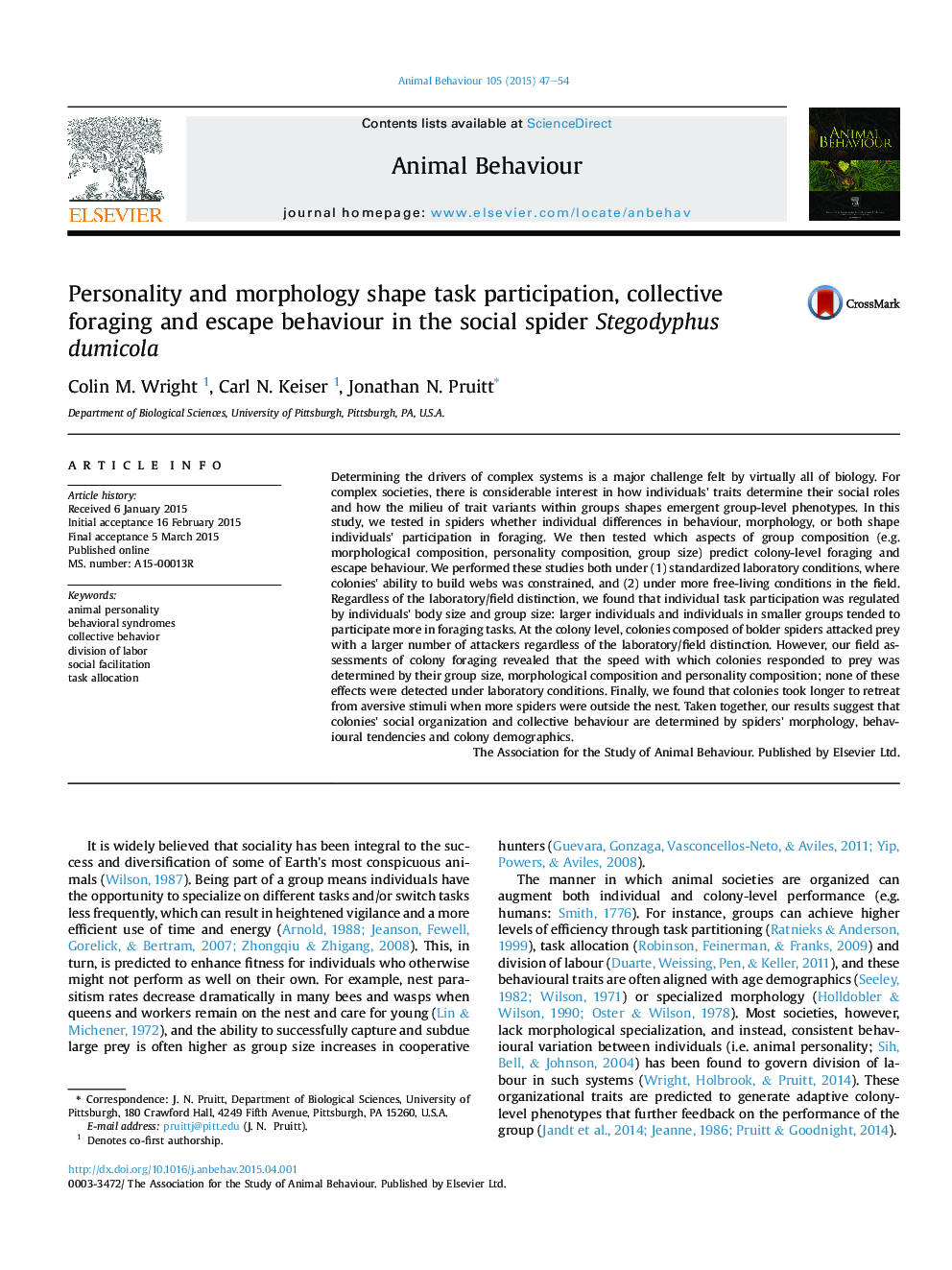| کد مقاله | کد نشریه | سال انتشار | مقاله انگلیسی | نسخه تمام متن |
|---|---|---|---|---|
| 8489809 | 1552223 | 2015 | 8 صفحه PDF | دانلود رایگان |
عنوان انگلیسی مقاله ISI
Personality and morphology shape task participation, collective foraging and escape behaviour in the social spider Stegodyphus dumicola
دانلود مقاله + سفارش ترجمه
دانلود مقاله ISI انگلیسی
رایگان برای ایرانیان
کلمات کلیدی
موضوعات مرتبط
علوم زیستی و بیوفناوری
علوم کشاورزی و بیولوژیک
علوم دامی و جانورشناسی
پیش نمایش صفحه اول مقاله

چکیده انگلیسی
Determining the drivers of complex systems is a major challenge felt by virtually all of biology. For complex societies, there is considerable interest in how individuals' traits determine their social roles and how the milieu of trait variants within groups shapes emergent group-level phenotypes. In this study, we tested in spiders whether individual differences in behaviour, morphology, or both shape individuals' participation in foraging. We then tested which aspects of group composition (e.g. morphological composition, personality composition, group size) predict colony-level foraging and escape behaviour. We performed these studies both under (1) standardized laboratory conditions, where colonies' ability to build webs was constrained, and (2) under more free-living conditions in the field. Regardless of the laboratory/field distinction, we found that individual task participation was regulated by individuals' body size and group size: larger individuals and individuals in smaller groups tended to participate more in foraging tasks. At the colony level, colonies composed of bolder spiders attacked prey with a larger number of attackers regardless of the laboratory/field distinction. However, our field assessments of colony foraging revealed that the speed with which colonies responded to prey was determined by their group size, morphological composition and personality composition; none of these effects were detected under laboratory conditions. Finally, we found that colonies took longer to retreat from aversive stimuli when more spiders were outside the nest. Taken together, our results suggest that colonies' social organization and collective behaviour are determined by spiders' morphology, behavioural tendencies and colony demographics.
ناشر
Database: Elsevier - ScienceDirect (ساینس دایرکت)
Journal: Animal Behaviour - Volume 105, July 2015, Pages 47-54
Journal: Animal Behaviour - Volume 105, July 2015, Pages 47-54
نویسندگان
Colin M. Wright, Carl N. Keiser, Jonathan N. Pruitt,